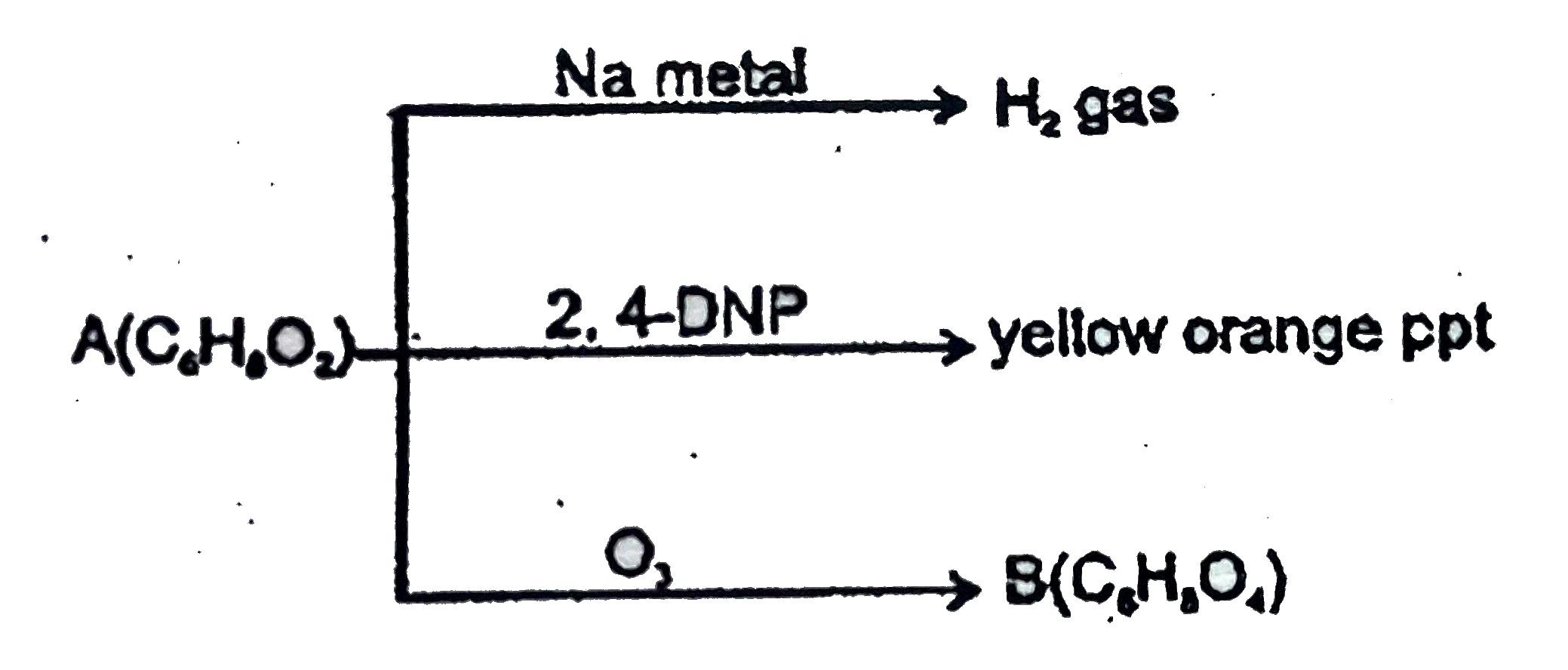A compound (A) is formed by the reaction of ethylene with bromine which on reacting with aqueous KOH gives a compound (B). The compound (B) can also be prepared by the reaction of ethylene with the following:
Baeyer’s reagent
Oxygen in the presence of silver catalyst and then acidic hydrolysis
performic acid and the product undergoes acidic hydrolysis
All of the above
The correct Answer is:D
To solve the problem, we will break it down into steps:
Step 1: Identify Compound A
- Reaction: Ethylene (C2H4) reacts with bromine (Br2).
- Mechanism: The double bond in ethylene attacks one of the bromine atoms, leading to the formation of a bromonium ion. The other bromine ion then attacks from the backside, resulting in a vicinal dibromide.
- Product A: The product formed is 1,2-dibromoethane (BrCH2-CHBr).
Step 2: Identify Compound B
- Reaction: Compound A (1,2-dibromoethane) reacts with aqueous KOH.
- Mechanism: The hydroxide ions (OH-) from KOH perform a bimolecular nucleophilic substitution (SN2) reaction, replacing the bromine atoms with hydroxyl groups.
- Product B: The product formed is ethylene glycol (HO-CH2-CH2-OH), also known as ethane-1,2-diol.
Step 3: Check Other Reagents for Formation of Compound B
We need to determine whether the following reagents can also yield compound B (ethylene glycol) when reacted with ethylene.
1. Baeyer’s Reagent (KMnO4)
- Reaction: Ethylene reacts with Baeyer’s reagent (acidified KMnO4).
- Mechanism: KMnO4 oxidizes ethylene to form a diol.
- Product: The product is again ethylene glycol (HO-CH2-CH2-OH).
- Conclusion: This reagent can form compound B.
2. Oxygen in the Presence of Silver Catalyst
- Reaction: Ethylene reacts with oxygen in the presence of a silver catalyst.
- Mechanism: This reaction leads to the formation of an epoxide (cyclic ether).
- Hydrolysis: The epoxide can then be hydrolyzed (using acidic conditions) to yield ethylene glycol.
- Product: The product is ethylene glycol (HO-CH2-CH2-OH).
- Conclusion: This reagent can also form compound B.
3. Performic Acid
- Reaction: Ethylene reacts with performic acid (HCO3H).
- Mechanism: Similar to the previous reactions, an epoxide is formed, which can be hydrolyzed.
- Hydrolysis: The hydrolysis of the epoxide yields ethylene glycol.
- Product: The product is ethylene glycol (HO-CH2-CH2-OH).
- Conclusion: This reagent can also form compound B.
Final Conclusion
Since all the reagents (Baeyer’s reagent, oxygen with silver catalyst, and performic acid) lead to the formation of compound B (ethylene glycol), the correct answer is:
- All of the above.
- Reaction: Ethylene (C2H4) reacts with bromine (Br2).
- Mechanism: The double bond in ethylene attacks one of the bromine atoms, leading to the formation of a bromonium ion. The other bromine ion then attacks from the backside, resulting in a vicinal dibromide.
- Product A: The product formed is 1,2-dibromoethane (BrCH2-CHBr).
- Reaction: Compound A (1,2-dibromoethane) reacts with aqueous KOH.
- Mechanism: The hydroxide ions (OH-) from KOH perform a bimolecular nucleophilic substitution (SN2) reaction, replacing the bromine atoms with hydroxyl groups.
- Product B: The product formed is ethylene glycol (HO-CH2-CH2-OH), also known as ethane-1,2-diol.
We need to determine whether the following reagents can also yield compound B (ethylene glycol) when reacted with ethylene.
- Reaction: Ethylene reacts with Baeyer’s reagent (acidified KMnO4).
- Mechanism: KMnO4 oxidizes ethylene to form a diol.
- Product: The product is again ethylene glycol (HO-CH2-CH2-OH).
- Conclusion: This reagent can form compound B.
- Reaction: Ethylene reacts with oxygen in the presence of a silver catalyst.
- Mechanism: This reaction leads to the formation of an epoxide (cyclic ether).
- Hydrolysis: The epoxide can then be hydrolyzed (using acidic conditions) to yield ethylene glycol.
- Product: The product is ethylene glycol (HO-CH2-CH2-OH).
- Conclusion: This reagent can also form compound B.
- Reaction: Ethylene reacts with performic acid (HCO3H).
- Mechanism: Similar to the previous reactions, an epoxide is formed, which can be hydrolyzed.
- Hydrolysis: The hydrolysis of the epoxide yields ethylene glycol.
- Product: The product is ethylene glycol (HO-CH2-CH2-OH).
- Conclusion: This reagent can also form compound B.
Since all the reagents (Baeyer’s reagent, oxygen with silver catalyst, and performic acid) lead to the formation of compound B (ethylene glycol), the correct answer is:
- All of the above.
Topper's Solved these Questions
- HALOALKANES & HALOARENES BOOK - VMC MODULES ENGLISHCHAPTER - HALOALKANES & HALOARENES EXERCISE - EFFICIENT
100 Videos
- ENVIRONMENTAL CHEMISTRYBOOK - VMC MODULES ENGLISHCHAPTER - ENVIRONMENTAL CHEMISTRYEXERCISE - JEE Main (Archive)
39 Videos
- HALOALKANES AND HALOARENESBOOK - VMC MODULES ENGLISHCHAPTER - HALOALKANES AND HALOARENESEXERCISE - IN-CHAPTER EXERCISE - F
6 Videos
Similar Questions
Knowledge Check
Which of the following compounds can be best prepared by Wurtz-reaction ?
AIso-butaneBn-butaneCn-pentaneDIso-pentaneAn organic compound B is formed by the reaction of ethylmagnesium iodide (CH3CH2MgI) with a substance A, followed bytreatment with dilute aqueous acid. Compound B does not react with PCC in dichloromethane. IdentifyA ?
ACH3−O∣∣C−HBCH2CH2O∣∣CCH3CH2C=OD
A compound A gives following reactions.

Its structure can be
View SolutionIdentify the compounds A and B in the given reactions :

View SolutionIdentify A to E. Pyrolusite on heating with KOH in the presence of air gives a dark green compound (A). The solution of (A) on treatment with H2SO4 gives a purple coloured compound (B), which gives the following reactions:
(a). KI on reaction with alkaline solution of (B) changes into a compound (C).
(b). The colour of the compoud (B) disappears on treatment with the acidic solution of FeSO4.
(c). With conc. H2SO4 compound (B) gives (D) which can compose to yield (E) and oxygen.
View SolutionThe compounds A and B in the following reaction are, respectively :

View SolutionWhich product is formed when the compound is treated with concentrated aqueous KOH solution ?
View SolutionA compound (P) on reaction with "Q" in basic medium (KOH) gives a bad smelling compound (CH3CH2NC). Compound Q can be prepare by reaction with calcium hypochlorite [Ca(OCl)2] P and Q can :
View Solution
